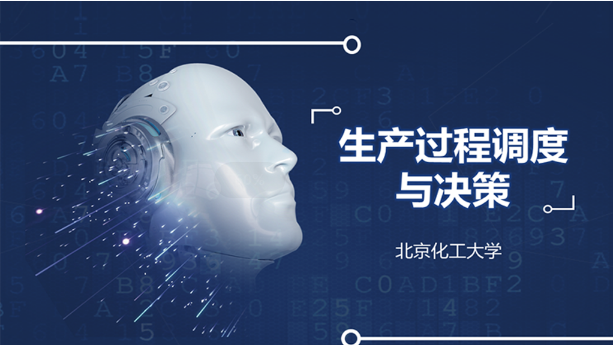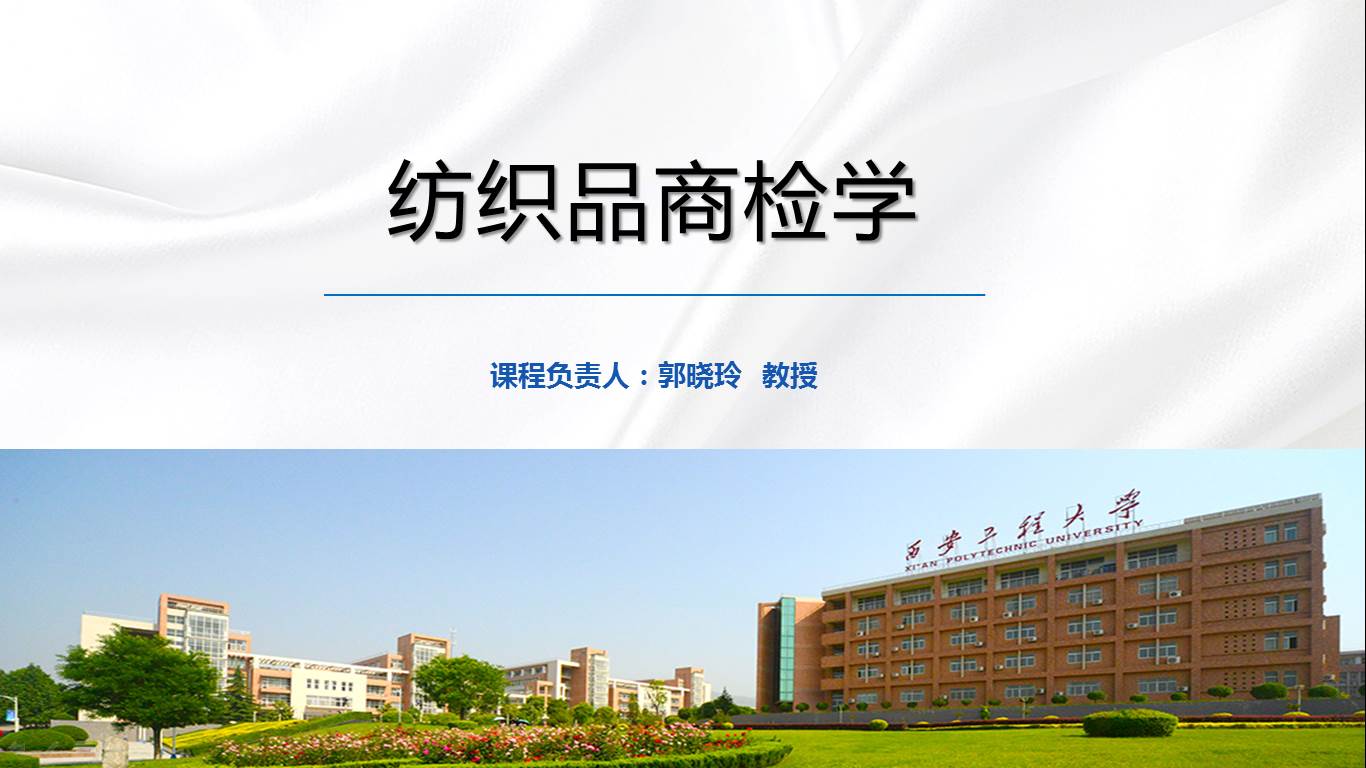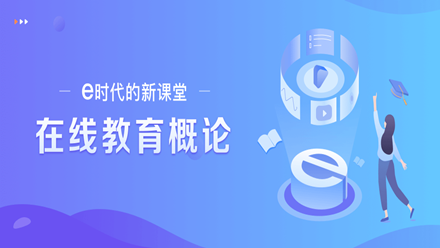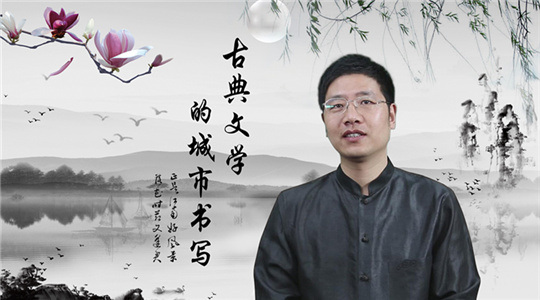
当前课程知识点:e时代的新课堂——在线教育概论 > 第五章 在线教育教学案例 > 5.4.1小容量班级完全翻转课堂 > 5.4.1小容量班级完全翻转课堂
各位老师好
Hello, everyone.
我是清华大学的于歆杰
I'm Yu Xinjie from Tsinghua University.
在这个第五周的课里
In this fifth-week class,
我来分享一下我们电路原理这个课
I'm going to share with you how we carry out blended learning in the course
是如何实施混合式教学的
called "Principles of Electric Circuits".
我将举两个案例
I'll talk about two cases in particular.
首先是举一个小容量班级
The first case is a complete flipped classroom
实现完全翻转课堂的案例
for a small class.
其次是一个大容量班级部分翻转课堂
The second case is a partial flipped classroom for a large class.
这个小容量
A small class
大概就是二三十人这个量级
consists of about 20 to 30 students.
大容量就是少则八九十人
A large class consists of at least 80 to 90 students
多则一百五六十人这个量级
and at most 150 to 160 students.
我们先来看小容量班级的案例
Let's first take a look at the small class case.
我们主要是从学生的课外内学习活动
I'm going to analyze it from two perspectives: students' learning activities during class and after class,
和他的学习成效这两个角度来展开
and the results of their learning.
那么首先在小容量班级下
First, for a small class,
我们想显著地提升学习成效
how do we greatly improve
那怎么才能做到呢
the students' learning results?
我们就得让学生在课前
We need to ask our students to
基于慕课视频
learn all the basic knowledge
已经把基础知识全学明白了
by watching MOOC videos before class.
而我们设计这个A模式
When we design Model A
电路原理混合式教学
of the blended teaching for "Principles of Electric Circuits",
非常重要的一个基本逻辑是说
a very important basic logic
让学生帮助他提高自己的创新能力
is helping the students improve their ability to innovate,
提高他的团队合作精神和意识
and also improving their teamwork spirit.
那怎么才能做到呢
How do we do that?
所以我们就得要让学生有动手的机会
We need to give our students hands-on opportunities.
于是你看
So, as you can see,
屏幕上我现在给出了两节课之间
the screen is displaying what we require the students to do
具体来讲就第五节课到第六节课之间
between the two classes,
我们要求学生干什么
i.e. between the fifth and sixth classes.
也就是他在课间的学习活动
These are their learning activities between classes.
他学完了第五节课
After the fifth class,
它需要做三道练习题
they need to complete three exercises.
这个要求跟传统的授课是一样的
This requirement is the same as that of a traditional class.
我们就不说了
We'll skip that.
他需要做一个实验
They need to conduct an experiment.
这个实验不是去实验室
This experiment isn't performed in a lab.
是需要他拿着自己的移动实验装置
The students need to conduct the experiment with their own
在任何的地方在任何的时间来开展试验
movable experiment devices anywhere, anytime.
具体这个实验怎么做
As to how to perform the experiment,
我们没有实验指示书
we don't have instruction manuals.
我们只不过在第五节课之前
We just ask the students to design the experiment
让他设计这个实验
before the fifth class.
它在第五节课之上
Then they discuss their ideas about designing the experiment
把这个实验的设计思路拿出来讲一讲
in the fifth class.
其他同学会给一些评价
Other students will give some comments.
通过讨论形成了自己的实验步骤
After the discussion, they form their own experimental steps
第五节课之后把这个实验做出来
and conduct the experiment after the fifth class.
他要在第六节课之上
Then they show their experiment's results
把这个实验结果拿出来展示一下
in the sixth class.
关于第六节课他要有预习
As for preparing for the sixth class.
我们给的预习安排就是让他去看
Our arrangement for the preparation is to ask them to watch
慕课视频18到21
MOOC videos from No.18 to No.21
做相关的quiz
and do a related quiz.
我们就给这两句话就好了
That's enough for us to give them these two requirements.
学生就可以拿着手机或者用计算机
Then our students can learn on their cell phones or computers
在自己方便的时间来学习
whenever it's convenient for them.
当然这仅仅是知识的学习
Of course, this is just learning knowledge,
它仅仅是学生创新能力的基础
which is the foundation of a student's ability to innovate.
怎么训练创新呢
How do we teach them to innovate?
关于这部分内容
As for this part,
我们让学生来设计一个实验
we ask our students to design an experiment.
我们就给屏幕上的这句话
Our requirement is this sentence [shown]on the screen.
我们学生用什么样的运算放大器
As for what operational amplifiers our students use,
怎么构成自己的跟随器
how they form their own followers,
怎么测量输入端口的ui特性
and how they measure the UI features of the input port,
我们都不管
we don't care.
他们自己随便设计
They can design that as they pleased.
他们的设计方案要在第六节课上讨论
Their designs will be discussed in the sixth class.
这就是学生在两节课之间需要干的事
That's what our students need to do between two classes.
你可以发现比起传统授课来讲
You will notice that compared to traditional classes,
他们要干的事多多了
they need to do far more things.
传统就是复习一下做几道题而已
In traditional classes, students only need to review and do some exercises.
可是现在要做一个实验
Now they need to do an experiment,
要设计一个实验
design an experiment,
还要看好多视频
and watch lots of videos.
那我们来看课堂上干什么
Now let's see what they do in class.
我们完全不讲课
We either don't give a lecture
或者老师只讲五分钟
or only give a five-minute lecture.
最多十分钟
Ten minutes at most.
更多的时间是讨论
We spend more time[是否应该在前面加on
] on discussing.
比如说由于学生课前
For example, since the students
已经把基本内容
have learned all the basic content
通过慕课视频全看完了
through watching the MOOC videos,
那学生可能就产生很多问题
They are likely to have lots of questions.
比如说他觉得老师讲错了
For example, they may think the teacher is wrong at some point,
比如说他觉得没听懂
or they don't understand what the teacher is saying,
或者他觉得老师讲得特别好
or perhaps they think the teacher's lecture is awesome.
他课外有了延展性阅读
With their extensive extracurricular reading,
他有一些阅读体会跟别的同学分享
they may have some ideas about the books they've read that they can share with other students.
那如果说对于某一个知识点
If there're no students asking questions
没有学生问问题
about a certain knowledge point,
那老师就结合学生课前预习情况
the teacher should consider the students' preparation for class.
这一点我们在前几周的慕课里讨论了
We talked about that in an MOOC a few weeks ago.
老师能够知道每一个学生的预习情况
The teacher can find out how every student prepares for class.
所以老师结合这个情况
So the teacher can consider this
设计有针对性的问题
when designing questions with clear targets.
这都是关于知识点
Those are all about knowledge points.
这个讨论大概会占到30分钟时间
The discussion takes about 30 minutes.
除此之外电路是一个核心课
"Principles of Electric Circuits" is also a core course.
我不能让学生就记结论
I can't just make my students learn conclusions by rote.
所以一定要用大量的题
So I need to use a large number of exercises
让学生把这个结论融会贯通
to help students fully understand the conclusions.
传统意义上来讲
Traditionally speaking,
我们在课堂内
when we're in class,
只能正确的把这些习题的解答过程讲出来
we can only correctly explain the process of solving these problems.
但是现在由于学生已经课前
Now that the students have learned
把很多内容学明白了
much of the content before class,
我们可以让他在课堂里通过相互讨论
we can allow them to find out why they've made a mistake
发现自己为什么做错这道题
through discussions with each other in class.
这一点对于学生学会怎么做对一道题
It's quite important for students to learn how to
是非常重要的
come up with the right solution to a problem.
传统意义上我们没有时间
Traditionally, we don't have enough time.
现在我们每堂课
Now we spend about
大概花30分钟来做这件事
30 minutes doing that in class.
当然我们为了训练创新
To train students to be innovative,
我们得让学生把自己的实验结果
we need to let them show their
拿出来展示一下
experiment results.
跟你设计的一样吗
Are the results the same as your design?
如果不一样你要解释一下
If not, you need to explain why,
把你为这堂课的实验设计思路
and explain your thoughts about designing
拿出来讲一讲
the experiment in this class.
其他同学有补充吗
Are there other students that have something they want to say?
或者根本就觉得你说的不靠谱
Or do they think what you've said doesn't make sense at all?
这个时间大概会占到30分钟
This part takes about 30 minutes.
所以这就是我们小容量班级
This makes up the content of a 90-minute
完全翻转课堂90分钟的构成
flipped classroom for a small class.
当然这样的课不能在传统教室里进行
Of course, such classes can't be done in traditional classrooms.
所以我们把清华的很多间教室
So we've rebuilt a lot of classrooms
都进行了改造
in Tsinghua University.
这样的教室都有很多块黑板
In classrooms like these, there are plenty of blackboards
围着几面墙
on several walls.
它都是圆桌或者多边形的桌子
There are only round tables or polygonal desks.
学生可以很方便地讨论
Students can hold convenient discussions in classrooms like this.
它都有至少一个甚至两个或者三个投影
There're at least one or even two to three projectors too.
学生的发言和老师的发言
The speeches of both students and teachers
可以同时在屏幕上展示
can be displayed on the screens simultaneously.
由于是电路的课
As it's an electric-circuit-related class,
所以它在桌子上有很多电源
there're plenty of power supply devices on the tables.
学生的笔记本 实验装置
The students' laptops and experiment equipment
都可以现场来供电来展示
can be put there and powered by the power supply devices.
老师给出了一个练习题
After the teacher has set a problem,
不同学生分组进行讨论
the students discuss it in groups.
有结果的学生
The students who have come up with answers
把这个结果平行的
write down the answers in simultaneously on the blackboard.
写在黑板上的一个场景
Here is such a situation.
那么现在屏幕上给出的就是
Now, what's on the screen
实验最后结果展示
is the final result of the experiment.
不同学生把自己的笔记本拿出来
The students take out their laptops
把自己的实验装置拿出来
and experiment devices,
在现场把实验结果调出来
and reveal their experiment results
接受老师和其他同学的检验
so that the teacher and other students can inspect them.
这就是学生课内外的学习活动
Those are the students' learning activities during class and after class.
那学习成效怎么样呢
So what's the learning effect?
我们从两个角度来说
Let's talk about it from two perspectives.
首先这种A模式
First of all, Method A's
目标是为了训练学生的创新的
goal is to train students to be more innovative.
所以我们非常关注
So we pay close attention
学生的课程的小制作
to the small gadgets our students make in class
我们给他布置的这个项目文件
and what finally happens to the project files
它最终怎么样了
we assign them.
令我们高兴的是
We're glad to see
我们这帮学生到目前为止
that up until now
已经有五届学生一百出头的学生读完了
there are 100 students from five grades have completed our course.
他们其中有5到6个课程的项目文件
Some of them have obtained patent licenses by themselves
自己申请到了专利的授权
for the project files of five to six courses.
这对于大一的学生来讲是非常不容易的
That's not an easy task for freshman students.
我们老师不给任何技术的指导
The teachers didn't give them any technological instruction
我们只给经费的支持
and only fund their projects.
而且这些学生不乏后续课外科技活动
Moreover, at other extracurricular technological events,
拿到国家挑战杯一等奖
some of these students won the first prize of China's Challenge Cup Competition,
拿到清华挑战杯特等奖的同学
and the special prize of Tsinghua University's Challenge Cup Contest.
除此之外电路是一个基础课
Apart from this, "Principles of Electric Circuits" is a basic course.
我们可不能捡了芝麻丢了西瓜
We should focus on the most important parts instead of some trivial details.
对于学生基本概念的掌握
We need to constantly ensure that our students
我们一刻不能松懈
can understand the basic concepts.
所以我们坚持A模式
So we stick to Method A.
每学期都做同卷流水改卷
Every semester, we have several teachers that score different parts of each student's exam paper
跟对照组进行分数的比较
and compare the scores with that of the control group.
各位老师可以发现
My fellow teachers, you'll soon discover
由于学生在课堂里
that since these students have had
把基本概念讨论得更为深刻了
thorough discussions about the basic concepts
把练习题出错的地方搞清楚了
and are aware of the mistakes they've made in exercises during classes.
所以每学期的期中期末考试
Therefore, for every semester's mid-term exam and final exam,
这些学生都比对照组的学生
these students' scores clearly improved
成绩有明显的提升
compared to the control group.
要知道A模式的学生
The students under Method A
并不是我们精心选出来的重点班
aren't elite students we've carefully selected.
A模式只不过是根据学生自己的意愿
They enrolled in the Method A program
来报名获取的
on their own free will.
这是我们说A模式
That's what Method A is like.
我们希望通过完全的翻转课堂
We hope that through a comprehensive flipped classroom environment,
学生和老师课外投入大量时间
students and teachers will clearly improve the effectiveness of their learning
来显著提升学习成效
by putting in lots of effort outside of class.
我们做成了
We've done it.
-混合式教学该怎么做?与清华老师一起聊聊
-看清华老师如何进行大班混合式教学
--Video
-如何做好混合式课堂的互动
--Video
-与清华大学老师聊聊慕课独特的教学设计
-“挑战60s”授课短视频大赛
--Video
-与清华大学老师聊聊慕课的制作与运营
--Video
-1.1在线教育发展现状
--html
-1.1.1在线教育带来了e时代的新课堂
-1.1.2师生说
--1.1.2师生说
-1.1.3我国在线教育的特点
-1.2什么是在线教育
--html
-1.2.1概念解析
-1.2.2教育的技术发展史
-1.2.3在线教育的五要素模型
-1.3在线教育对教师的机遇与挑战
--html
-1.3.1机遇篇
--1.3.1机遇篇
-1.3.2挑战篇
--1.3.2挑战篇
-1.4在线教育发展的历史
--html
-1.4.1二十世纪的发展
-1.4.2二十一世纪的发展
-1.4.3在线课程三要素
-1.4.4虚拟教育组织
-1.5课程内部体系和外部关系
-第一章 解读在线教育--单元习题
-讨论题
-2.1数字时代带来教育变革
-2.2在线教育更适应学生的学习需求
--html
-2.2.1教育需求的发展
-2.2.2学习风格与学习类型
-2.2.3多模态数据分析学生学习行为与需求
-2.2.4教育目标
-2.2.5拓展学习时空,促进深度学习
-2.2.6自主学习系统的案例分享
-2.3在线教育帮助教师成长
-2.4学校和国家为什么要做在线教育
-单元习题--作业
-3.1高等学校在线教育发展
-3.1.1学校现状
-3.1.2平台与联盟
-3.2不同类型的教师都能得益于混合式教学
-3.3混合式教学的好处
-3.3.1当前的教学问题
-3.3.2教师和学生的收益
-3.4混合式教学的关键细节与常见误解
-3.4.1关键细节一
-3.4.2关键细节二
-3.4.3关键细节三
-3.4.4误解篇一
-3.4.5误解篇二
-3.5智慧教学工具的发展
-3.5.1综述篇
--3.5.1综述篇
-3.5.2雨课堂的诞生
-3.5.3雨课堂的功能
-3.5.4课堂教学需要雨课堂
-3.5.5雨课堂解决面授时间紧张的问题
-3.5.6雨课堂解决课前课中课后的学习效果问题
-3.5.7课前课中课后雨课件设计要点
-第三章 高校在线教育进行时--单元习题
-讨论题
-讨论题
-4.1教育实践的展望(一) 教育创新
-4.2教育实践的创新(二) 教育技术与决策
-4.3教育理论的热点趋势
-第四章 在线教育的未来--单元习题
-讨论题
-5.1邓俊辉老师《数据结构》与《计算几何》教学案例
--html
-5.1.1慕课制作与使用心得(一)
-5.1.2慕课制作与使用心得(二)
-5.2张瑜老师《思想道德修养与法律基础》教学案例
--html
-5.2.1教学理念与混合式教学的主要环节
--Video
-5.2.2章节实例
-5.3杨芳老师《大学英语》教学案例
--html
-5.3.1混合式教学设计心得
-5.3.2 University单元教学设计
-5.4于歆杰老师《电路原理》教学案例
--html
-5.4.1小容量班级完全翻转课堂
-5.4.2大容量班级部分翻转课堂
-5.5郑莉老师《C++语言》教学案例 雨课件样例及校内教学心得分享
--Video
-单元习题--作业








